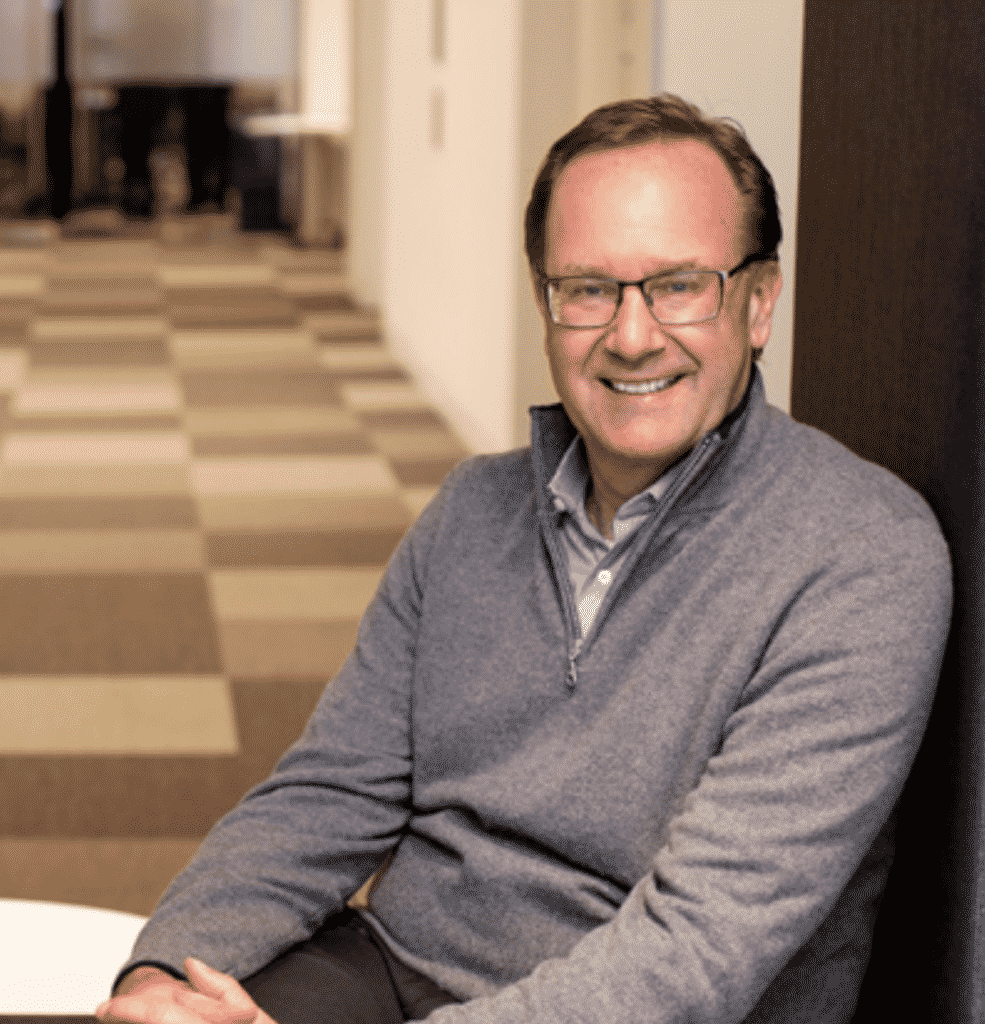No one who has visited a warehouse or a logistics hub has escaped seeing Zebra Technologies’ barcode printers rattling labels quickly and reliably. What far fewer people know is that the company offers a wide range of increasingly advanced solutions for automatic identification and data capture. Even fewer might know that Zebra has been successfully led by the Swede Anders Gustafsson since 2007.
On average, an American CEO remains in his position for five years at a larger company. Anders Gustafsson is finishing his fourteenth year as CEO of Zebra Technologies. One might wonder what the secret behind this is, and mainly it is about good performance, which is reflected in the fact the company’s share value has increased fivefold in the last five years. In addition, there is a tradition of continuity and stability in the post. Gustafsson’s predecessor and founder Edward L. Kaplan served as CEO of Zebra for 37 years.
“I’ve stayed because the company is doing well, and because I am happy and enjoy working here,” Gustafsson comments on his long career as CEO for the company. He gives a modest and humble impression and seems to have retained his Swedish heritage despite having worked abroad since the 1990s, and the fact he no longer gets to speak Swedish as often as he used to with his family. He also emphasizes the team’s importance in the company’s performance.
“It is teamwork to be the manager of a large company where it is all about building strong teams and collaborating. In Sweden, we have a tradition of cooperation and consensus, which is good, but a balance is needed in this type of leadership,” he adds and suggests that it can be too cumbersome if the consensus doctrine is pushed too far.
Zebra Technologies is a successful company with solutions that are increasingly in demand in a time when e-commerce, digitalization and process automation has become part of everyday life. The company’s market capitalization is on par with Telia and Swedbank, and it is three times as high as the Swedish crown jewel Electrolux.
Early career ambition: engineering
Making an international career was not something Anders dreamed of growing up in Gothenburg. With a father who was an ICA trader and a mother who worked as a nurse, there were no great expectations of the young Anders, other than that he would get a good education. And that he did.
“I started my studies at Chalmers University of Technology in Gothenburg where I focused on electrical engineering. I wanted to be an engineer from the beginning as I had seen images of mining engineers and I thought they had cool hats,” Anders adds with a laugh.
However, his study period was a success. Anders received a number of academic awards for outstanding studies and he is still engaged as an Chalmers’ alumnus. Attracted by the IT and telecom industry Anders’ professional life began in the 1980s in the telecom industry, where he held managerial and leadership roles at Ericsson and Motorola, among others. He later took on the role of Senior Executive Vice President at Illinois-based network technology company Tellabs (2000-2004), from which he stepped into the job of CEO of listed telecom company Spirent Communications, headquartered in California. There he launched a powerful change work, developed the corporate strategy, divested non-core businesses, reduced costs and integrated acquired companies. It was a successful stay that in 2007 took Anders on to the current position.
“It was a friend of mine who requested that I apply for the position as CEO of Zebra, and here I am today. I am a strategic person, good at building teams and have a passion for technology and innovation,” Anders adds and admits he is has competitive instinct and a desire to perform, rather than rise in the ranks.
Hidden in plain sight
When Anders took the lead at Zebra Technologies in 2007, the company was still strongly associated with industrial printers. Together with the rest of the management team, he saw an opportunity to develop the business into a supplier of a wide spectrum of complete solutions that create added value for customers. For Zebra, this was about giving their customers better oversight and visibility of what is happening in their businesses by linking together physical assets, employees and software – in other words what already in 1999 was named the Internet of Things (IoT) by the entrepreneur Kevin Aston – a concept that gradually started to be realized during the 2010s. Regardless of which techniques are used, this process is about making frontline workers as productive as possible, i.e. warehouse personnel, drivers and store employees.
“We usually talk about sense, analyze and act when referring to points where our solutions capture, compile and analyze data and create conditions for our customers to make decisions in real time that optimize their productivity in real time. I jokingly say that we have been hiding in plain sight for 20 years. And by this, I mean that people in general do not know us, but that we are nevertheless everywhere in people’s everyday lives. For example, most e-commerce packages are delivered using a handheld mobile scanner made by us and the label on the package is most likely printed by one of our printers,” Anders says and adds that the company’s name, Zebra Technologies, was launched in 1986 when the zebra-striped barcodes broke through.
Within the supply chain and logistics areas, visibility and coordination have long been obvious goals, with ever-increasing demands for real-time visibility at an all-in-one detailed level. Against this background, IoT and the interconnection of bringing physical things into the digital world, people and activities are one of the most tangible enablers to become more productive, efficient and value-creating.
“Business development is increasingly about digitizing and automating processes, and from our perspective this means connecting machines that communicate via the internet. In a supply chain, a typical example is the increased need for real-time traceability. Nowadays, with relatively simple technology, you can see if a delivery of fresh tomatoes from Spain to Sweden is exposed to the wrong temperature during their transport, and with that information redirect and sell the delivery to a ketchup factory instead of selling the delivery as fresh tomatoes,” says Anders with a very pedagogical example.
Built on the core
Anders Gustafsson emphasizes that the transformation of Zebra since 2007 has taken place step by step, where the strategy has been to build on the company’s successful core and seize the business opportunities in related business areas.
“In the beginning many thought we should continue doing what had made us successful for a long time. But my personal analysis was that which had given us success yesterday, was not necessarily the way forward to successful growth tomorrow. We already had a market position that made it possible to invest and expand in related business areas and to differentiate us from any competitors at the time,” Anders explains.
Acquisition of Motorola Solutions Enterprise business
Based on this strategy, Zebra has made several successful acquisitions and investments over the past decade. In 2013, Zebra acquired Hart Systems, a company offering cloud-based solutions for inventory. In recent years, the arm of Zebra known as Zebra Ventures has also become a partner in several robotics companies. In fact, Zebra recently announced its intent to acquire Fetch Robotics. The largest, strategically crucial acquisition was made in 2014 when Zebra acquired Motorola Solutions’ Enterprise business for 3.45 billion USD, mostly with borrowed money.
“The acquisition became a milestone in our company’s history because it fundamentally transformed our company. By merging the operations, we became a bigger, more strategically relevant player for what we call Enterprise Asset Intelligence, meaning the interconnection that makes things visible and optimizes the use of a company’s physical assets and workers.”
During the past few years, several more strategic acquisitions have also been made. In 2019, Zebra acquired Temptime Corporation, a specialist in temperature control for the health sector; Profitect which is a leader in prescriptive analytics and Cortexica, an expert in computer vision solutions. And last year Reflexis Systems, a supplier of software for personnel planning and scheduling, was acquired.
Culture and people as unique means of competition
The acquisition of Motorola Solutions’ Enterprise business was based on the IoT vision and at the time, it was considered a bold move by many analysts. Over the years, the merging of the two companies has proved successful, which is clearly reflected in the fact the company’s share price has increased by 500% since 2015. When the companies merged, Zebra was employing slightly over 2,500 people and Motorola Solutions Enterprise business around 4,500. Zebra brought together both company culture and employees into the new Zebra Technologies. The company made a conscious decision to define its own unique culture based on five core values: agility, innovation, teamwork, integrity and accountability. Around the world, Zebra employees practice these values as they work together to develop industry leading hardware, software and service solutions to give organizations a competitive edge in their respective industries.
“With results in hand, we have been successful. Over the years, we have managed to build a common culture and vision that advances innovation and focuses on the customer,” Anders adds and says that most companies have access to the same, basic ingredients and that it is therefore in the culture and through the people that you can be differentiated, create more unique competitive advantages and be successful.
Great growth ambitions
If the past decade has been good, it is going extremely well right now. Despite a slight decrease in revenue in 2020 as a result of the pandemic, Zebra showed record high returns during Q4 in 2020, and the growth targets for 2021 are high.
“In general, the demand was generally subdued during the pandemic, but the growth of e-commerce and the continuity of digitalization and automatization in the business sector contributed to us delivering a record result in Q4 last year. The goal in 2021 is to grow organically by 18-22% as a result of the strong growth in e-commerce,” Anders says and concludes that these are extremely aggressive growth ambitions for a company whose organic growth for a long time has been a few percent per year. The 2020 explosive growth of e-commerce is expected to continue; and within manufacturing and transportation and logistics, demand is rapidly increasing for systems and solutions that deliver crucial business-related data in real time.
Spare time and the future
For all top executives, the job takes up most of the waking time. And this is the case for Anders Gustafsson who does not find much time for trips to the Caribbean or much other luxury consumption.
“It is true that my free time is quite limited. In addition to work, I play a little golf, but most of the time I like spending time with my wife of 29 years, Donna. She is my life partner and an invaluable support for me as a person and even as a business leader because she also works in the business world.”
The Gustafsson’s normally travel twice a year to Sweden to spend time with family and friends. However, they have no plans to move back to Sweden in the future. During their years in the USA, Illinois and Chicago have become home to the couple. It is here where they have their networks, friends, daily lives and future plans.
“I have no plans to stop working as CEO at Zebra, but when I do, I look forward to a slightly freer life with board work, volunteering and charity work,” Anders finishes off.
ABOUT ANDERS GUSTAFSSON
Education: Master of Science in Electrical Engineering, Chalmers University of Technology and later Master’s degree from Harvard School of Business.
Career: Anders Gustafsson became chief executive officer and a director of Zebra Technologies on September 4, 2007. Prior to joining Zebra, Mr. Gustafsson served as CEO of Spirent Communications plc, a publicly traded telecommunications company. At Spirent, Mr. Gustafsson redirected that company’s growth strategy, divested non-core operations, integrated historic acquisitions and streamlined the organization to realize significant cost savings. Prior to Spirent, he was senior executive vice president, global business operations, of Tellabs, Inc. While at Tellabs, Mr. Gustafsson also served as president, Tellabs International, as well as president, global sales, and vice president and general manager, Europe, Middle East and Africa. Earlier in his career, he held executive positions with Motorola and Network Equipment Technologies.
Family: Wife Donna and two sisters with families in Sweden.
Hobbies: Golf and spending time with friends and family.
Most important rule of life: Put yourself in a position to take some bold but measured risks and see them pay off.
Best leadership advice: Invest in a company culture that embraces innovation and transformation and lead conversations to reach alignment so you can ultimately make faster decisions.
ABOUT ZEBRA TECHNOLOGIES
Zebra (NASDAQ: ZBRA) empowers the front line in retail/ecommerce, manufacturing, transportation and logistics, healthcare, public sector and other industries to achieve a performance edge. With more than 10,000 partners across 100 countries, Zebra delivers industry-tailored, end-to-end solutions to enable every asset and worker to be visible, connected and fully optimized. The company’s market-leading solutions elevate the shopping experience, track and manage inventory as well as improve supply chain efficiency and patient care. In 2020, Zebra made Forbes Global 2000 list for the second consecutive year and was listed among Fast Company’s Best Companies for Innovators.






